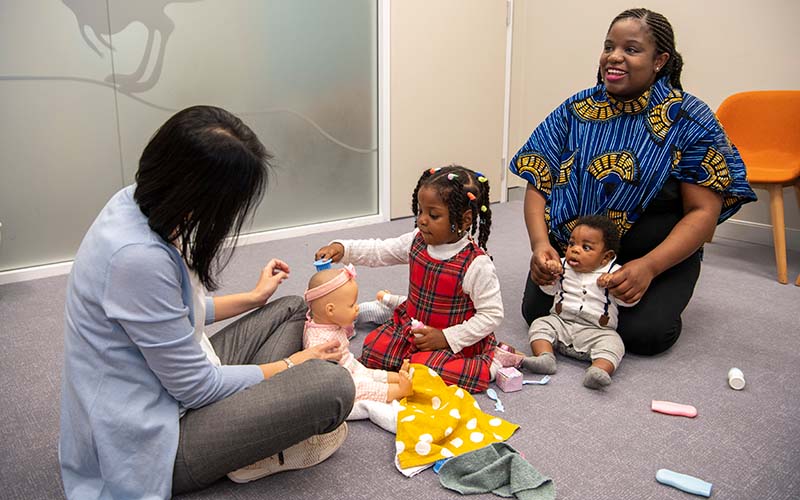Search
Showing results for "clinical trials"
Research
Effect of different lung recruitment strategies and airway device on oscillatory mechanics in children under general anaesthesiaAtelectasis has been reported in 68 to 100% of children undergoing general anaesthesia, a phenomenon that persists into the recovery period. Children receiving recruitment manoeuvres have less atelectasis and fewer episodes of oxygen desaturation during emergence. The optimal type of recruitment manoeuvre is unclear and may be influenced by the airway device chosen.
Research
Developmental vitamin D deficiency produces behavioral phenotypes of relevance to Autism in an animal modelHere we investigate these features in an animal model related to autism spectrum disorder - the DVD-deficient rat
Research
Brief Report: An Exploratory Study of the Diagnostic Reliability for Autism Spectrum DisorderWe conducted a study that examined the concordance of diagnoses between a multidisciplinary assessment team and a range of clinicians in Australia.
Research
Obesity and associated factors in youth with an autism spectrum disorderPrevalence of overweight/obesity in children and youth with autism spectrum disorder, and associations between weight status and range of factors
Research
Identification of subgroups of children in the Australian Autism Biobank using latent class analysisThe identification of reproducible subtypes within autistic populations is a priority research area in the context of neurodevelopment, to pave the way for identification of biomarkers and targeted treatment recommendations. Few previous studies have considered medical comorbidity alongside behavioural, cognitive, and psychiatric data in subgrouping analyses.
Research
Reliability of the Commonly Used and Newly-Developed Autism MeasuresThe aim of the present study was to compare scale and conditional reliability derived from item response theory analyses among the most commonly used, as well as several newly developed, observation, interview, and parent-report autism instruments.
Research
Adapting a measure of gross motor skills for individuals with CDKL5 deficiency disorder: A psychometric studyValidated measures capable of demonstrating meaningful interventional change in the CDKL5 deficiency disorder (CDD) are lacking. The study objective was to modify the Rett Syndrome Gross Motor Scale (RSGMS) and evaluate its psychometric properties for individuals with CDD.
Research
A randomised controlled trial of an iPad-based application to complement early behavioural intervention in Autism Spectrum DisorderTechnology-based interventions may provide a relatively low-cost addition to existing therapist-delivered interventions for children with ASD
Research
Content validation of the Quality of Life Inventory—DisabilitySatisfactory content validity is reported, where ongoing consumer feedback shaped the dataset from which the final items were selected

The Kids' autism research takes place at CliniKids, a centre that integrates world-class research with a clinical service for children with developmental delay and/or autism and their families.
